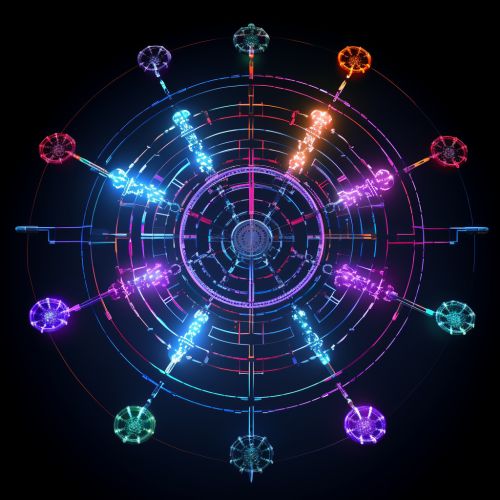Physics of Quantum Photonics in Telecommunication
Introduction
Quantum photonics is a branch of quantum physics that explores the fundamental interaction between photons and matter. This field of study is crucial in the development of quantum information science, particularly in the realm of telecommunications. Quantum photonics in telecommunications involves the use of quantum mechanics to transmit information over long distances with high security and efficiency.


Quantum Photonics
Quantum photonics is a multidisciplinary field that combines quantum mechanics, photonics, and materials science. It involves the manipulation of photons at the quantum level to achieve a variety of technological applications. Quantum photonics has the potential to revolutionize many areas of technology, including quantum computing, quantum cryptography, and telecommunications.
Quantum Mechanics and Photonics
Quantum mechanics is the branch of physics that deals with the smallest particles in the universe, such as atoms and subatomic particles like photons. It is based on the principles of superposition and entanglement, which allow particles to exist in multiple states simultaneously and to be instantly connected to each other, regardless of distance.
Photonics is the science of generating, controlling, and detecting photons. It is a key technology in a wide range of applications, from telecommunications to medical imaging. In quantum photonics, these two fields are combined to manipulate photons at the quantum level.


Materials Science in Quantum Photonics
Materials science plays a crucial role in quantum photonics. The properties of materials at the quantum level can significantly affect the behavior of photons. For instance, certain materials can enhance the interaction between photons, enabling the creation of entangled photon pairs, a key resource in quantum information science.
Quantum Photonics in Telecommunications
Quantum photonics has the potential to revolutionize telecommunications by enabling the transmission of information with unprecedented security and efficiency. This is achieved through the use of quantum states of light, which can carry information in a way that is fundamentally secure from eavesdropping.
Quantum Key Distribution
One of the most promising applications of quantum photonics in telecommunications is Quantum Key Distribution (QKD). QKD is a method of transmitting cryptographic keys securely using the principles of quantum mechanics. It allows two parties to share a secret key that can be used to encrypt and decrypt messages, with the security guaranteed by the laws of quantum mechanics.


Quantum Repeaters
Quantum repeaters are devices that can extend the range of quantum communication networks. They work by storing and re-emitting quantum states of light, allowing quantum information to be transmitted over long distances without loss of fidelity. Quantum repeaters are a crucial component of future quantum networks, which will enable secure communication across the globe.
Future of Quantum Photonics in Telecommunications
The future of quantum photonics in telecommunications is promising, with many potential applications beyond secure communication. For instance, quantum networks could enable distributed quantum computing, where quantum computers in different locations can work together to solve complex problems. Furthermore, quantum photonics could lead to the development of ultra-fast quantum internet, which would revolutionize the way we transmit and process information.


